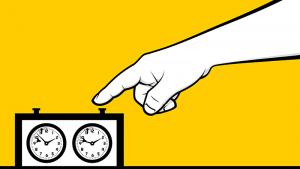
Blunders: A Grandmaster's Perspective
A few months ago, IM Jeremy Silman wrote an entertaining and highly informative article on why grandmasters blunder.
I was particularly impressed with his opening remark:
"Over the years I’ve noticed that whenever a grandmaster hangs his face, the masses of fake names go berserk and not only berate the unfortunate player but toss sick (and completely ignorant) accusations his way".
It is tempting to interpret the two consonants next to a player's name as a seal of perfection, but as Silman points out, grandmasters are not immune to the occasional mental lapse.
To this end, I would like to share two instructive blunders from my recent chess career, and to reconstruct the train of thought that caused an outwardly inexplicable snafu. Make no mistake: the blunder-inducing factors identified by Silman are impossible to eradicate.
We all get tired. We all suffer momentary lapses of concentration. We all experience the occasional neural misfiring. However, these insidious forces can often be counteracted by targeting their physical manifestations. Hopefully, through the following (admittedly painful) journey we will come one step closer to doing just that.

Blunder #1: Loss of "Calculational Discipline"
As the game trundles on, our supply of energy inevitably runs thin, and it becomes harder and harder to remain tactically vigilant. Don't believe me? Watch this!
After developing a crushing attack in the opening, Jobava needlessly sacrificed a rook and refused several chances to repeat the position, eventually landing himself in a dire situation. At this point, I had around seven minutes on the clock, plenty of time to work out the complications and find the path to victory.
In my excited (and fatigued) state, I simply assumed that all three king retreats led to the exact same position: 48..Ke7 49.Nd5+, 48...Kf8 49.e7+ Kxe7 50.Nd5+, and 48...Kd8 49.e7+ Kxe7 50.Nd5+. In all three scenarios, the knight will restrain the pawn from c3, but Black's king will chase it away, gobble up the a4-pawn, and usher the newly-created passer to heaven and beyond.
Ecstatic at the prospect of my first victory over a super-GM, I grabbed my king and confidently pushed it one square forward:
48...Ke7??
Only after making this dreadful, brainless move did I realize the fault in my thought process: after 49.Nd5+, Black will have to spend a golden tempo eliminating the e6-pawn, landing the king in a horribly awkward position. Indeed, the monarch will now have to take a circuitious route to reach the a4-pawn (e5-d4-d3-c2-b3), enabling its vis-a-vis to rescue the helpless cavalier.
Meanwhile, after 48...Kf8 (or 48...Kd8) 49.e7+ Kxe7 50.Nd5+, the e-pawn no longer exists, a fact that I had simply overlooked in my hallucination. Now, the king can take a direct route to b4 (via d6 and c5), winning on the spot.
Unsurprisingly, Jobava did not give me a second chance.
I played 48...Ke7 after approximately two minutes of thought. Had I taken an additional 30 seconds to double-check my calculations, I would have undoubtedly snapped back to reality.
Though I was not the happiest after drawing this game, I learned a crucial lesson: confidence and discipline are two entirely different things. No matter how well you have played, or how confident you feel, exhaustion will always take its toll on your cognitive abilities.
Before making an important, potentially game-changing decision, briefly run through your calculations to ensure that everything checks out. Even a cursory examination of this sort will save you from countless mishaps.
Blunder #2: The Dreaded Intermezzo
Regular readers of my column (a category that hopefully exists outside of my imagination) will notice that I have already written a two-part article on avoiding blunders. In this article, I mentioned that it is important keep a DAP (double attacks, pins) check running in the back of your thoughts, consistently ensuring that your moves do not fall prey to the two most commonly overlooked tactical operations: double attacks and pins.
Having gained a bit more experience at a grandmaster level, I can now add a third repeat offender to the list: in-between moves.
Frequently, "I-can't-even-explain-what-happened" moments occur because we judge a move on the basis of its appearance, without explicitly working out the complications. This intuitive reasoning can save us a lot of time, but it can also prevent us from seeing concealed tactics, and lead us down a calamitous path.
Crucially, you should limit the number of "shortcuts" that you take in a game. Even though a move might look impressive, you should evaluate it objectively.
There is a time and a place for intuition, but it should only be applied when calculation is futile.
Of course, it is impossible to formulate some sort of blunder-eliminating algorithm. However, by being aware of the forces that cause blunders — and by actively thwarting them during the game — we can come one step closer to reaching that unattainable state known as perfection.






